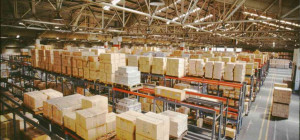 In the workplace, employees are often handling products on their own without the use of machines or automated systems. This is referred to as manual handling, something that has prompted the development of the Safety, Health, and Welfare at Work Act. Essentially, in order to reduce work-related injuries, certain procedures must be done in order to prevent potential problems from occurring. It’s not just about the safety of employees, but the safety of those around them that may also be affected by making improper choices.
In the workplace, employees are often handling products on their own without the use of machines or automated systems. This is referred to as manual handling, something that has prompted the development of the Safety, Health, and Welfare at Work Act. Essentially, in order to reduce work-related injuries, certain procedures must be done in order to prevent potential problems from occurring. It’s not just about the safety of employees, but the safety of those around them that may also be affected by making improper choices.
Here is a quick overview of what manual handling is, and what manual handling training will often present when you are required to learn and implement this information.
What Exactly Is Manual Handling?
The most well-known example of demonstrating proper procedures for manual handling is when you are instructed to bend your knees and keep your spine straight when you are lifting heavy items. It should be noted that this type of training does apply to everyone at a company, nor will it apply to all employees and staff members because of the work that they typically do. It is simply information that every worker needs to know in case they are placed in a situation where they will have to manually lift or move some type of product without the aid of another person or machine.
Why Is This An Important Topic?
One of the primary reasons for such an emphasis on manual handling training is that one-third of every single workplace injury is the result of improper manual handling activities. Many of those that are injured will go on disability. This can be detrimental for both the worker and their employer. The worker could suffer from the injury for what could be many months or years. The employer is going to lose money as a result of how much it will cost to help rehabilitate the employee that made a mistake while manually lifting something the wrong way.

How Can These Incidents Be Reduced?
Part of the manual handling training that employees will receive will look at how easy it is to reduce or remove the need for manually handling many products that workers are responsible for. By addressing this issue directly, it can help reduce overall injury rates, but only if the information presented is relevant to specific tasks.
An example of this would be workers in a warehouse that might be required to move heavy barrels from time to time. The training that they would receive would revolve around how to properly move the barrels without injury. This training would not include how to properly lift a box which is something they may not do at all. By addressing these issues specifically, these incidents can be reduced significantly by helping workers understand how to protect themselves when lifting specific objects they are responsible for.

Are Employers Required To Assess All Physical Activities Of The Workplace?
As mentioned earlier, it’s a good idea to address each individual type of product that could be lifted by specific employees on a day-to-day basis. Therefore, employers will need to consider all physical activities in the workplace in order to provide the best possible safety outline. In general, the training will go over how to transport a load by one or more employees. They will go into detail about pulling, pushing, lifting, and moving loads of different sizes.
From that basic introduction, they will then address individual situations that are relative to each employee and the products they are likely required to move from time to time. It is possible that those that are providing the training would actually provide pictures and guidelines specific to each type of employee, and the items that they could lift. This would provide a much better resource for all of the employees by being so specific.
If you are an employer, and you are going to provide safety-related information on manual handling tasks, this will probably begin with some type of the video series that everyone needs to watch. It is going to address general problems that workers may encounter without going into specifics. This is because each job, for each company, is going to be slightly different.
Subsequent to the videos, employer’s will provide a five-stage process by which they can address these specific issues. This will allow them to identify specific problems and risk factors, identify improvements that can be made, and implement control measures to make sure that every worker is safe. By providing this manual handling training for your employees in this manner, you will greatly reduce the probability of your workers experiencing injuries as a result of manually handling products in an inappropriate manner.
Contributed byhttps://www.backsafe.com.au/







